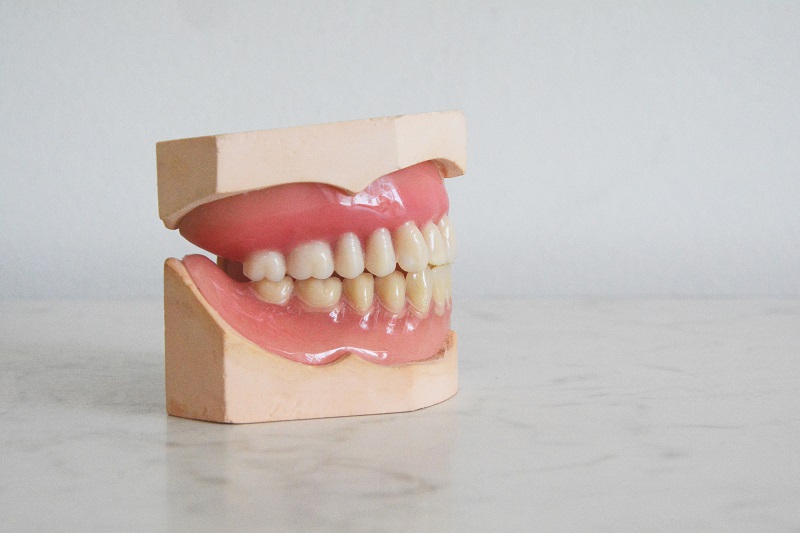
You’ve probably heard of overbites, crooked teeth, or underbites whether you know someone who has one of these conditions or if you’ve experienced one yourself. These conditions are considered different types of malocclusions, which is the official term for mismatched teeth or jaw issues caused by misalignments with your bite. Roughly 2/3 adults have some degree of malocclusion as very few people have perfectly aligned teeth. While some cases do not require significant treatment or treatment at all, we want to educate you on this common orthodontic occurrence and give a brief guide to malocclusions.
What is malocclusion?
Occlusion refers to the meeting of your teeth, or the actual contact of your teeth in your upper and lower jaws. Your teeth should fit easily and comfortably within your mouth without crowding, gaps, or any teeth that may be rotated or twisted. There should be a slight overlap of your upper jaw on your lower jaw so that your molars can fit into the grooves of their opposite molars.
Malocclusion refers to any deviation from the ideal occlusion. Most people have a malocclusion to some degree, but often it is so minor that treatment is not necessary unless for aesthetic reasons. There are three main categories of malocclusions:
Class 1 – This is the most common type of malocclusion where the bite is normal, but there may be a slight overlap.
Class 2 – Commonly referred to as an overbite where a severe overlap is present, meaning the upper teeth and jaw significantly protrude over the lower jaw and teeth.
Class 3 – More commonly known as an underbite, this class refers to cases where the lower jaw juts out causing the lower teeth to overlap the upper jaw and teeth.
The types of malocclusion can vary, but any type can cause issues for a patient. Common types of malocclusions include:
Crossbite – When the upper teeth bite down inside the lower teeth. It can occur on one side or both and may involve either the front or back teeth.
Open bite – When the front teeth do not overlap with the lower teeth or jaw when the mouth is closed there is a space between the top and bottom teeth.
Overbite – A severe overlap of the lower front teeth. In severe cases, the front teeth may hit the gums when a person bites their teeth together.
Overcrowding – Often caused by a lack of space resulting in teeth that overlap or become crooked, rotated, or twisted.
Overjet – Similar to an overbite, but occurs when the top teeth extend beyond the bottom teeth horizontally.
Spacing – Spaces that occur between two or more teeth
Underbite – An underbite is an anterior crossbite that occurs with the front teeth. When the mouth is closed the lower teeth protrude forward of the top teeth.
Symptoms
Symptoms of malocclusions vary depending on the classification, type, severity, and patient but common symptoms include:
- Misaligned teeth
- Abnormal signs of wear on teeth
- Difficulty chewing or biting
- Alteration in facial features
- Frequent biting inside of the cheek or tongue
- Headaches
- Tooth grinding
- Neck, shoulder, and upper back pain
- Speech complications
- Mouth, teeth, or jaw pain
- Breathing through the mouth rather than the nose
Cause
There is no single direct cause for all malocclusions. The majority of the time it is heredity due to a size difference in the upper or lower jaw or jaw shape. Sometimes certain birth defects such as cleft lips or cleft palates can lead to the development of malocclusions.
It can also be acquired from childhood habits such as thumb sucking, pacifier usage, or bottle-feeding beyond the age of three. Children who have little space between their baby teeth are likely to experience overcrowding with their permanent teeth which can result in malocclusions.
Other causes for malocclusion include abnormally shaped teeth or bite patterns, presence of extra teeth, loss of teeth due to injury or accident, or impacted teeth. Malocclusions may also occur due to poor dental care such as poorly-fitted crowns or other dental/orthodontic appliances. Medical conditions such as allergies or enlarged adenoids or tonsils may also lead to airway obstructions and could create a degree of malocclusion.
Diagnosis
Malocclusions are often diagnosed during routine dental exams. If suspected, x-rays, photographs, and molds are taken and often given to an orthodontist to study and confirm.
Treatment
If a malocclusion is confirmed, an orthodontist will handle treatment in most cases. Treatment varies depending on the type of malocclusion and is determined on an individual basis. Several factors are considered including age, medical history, overall health, and the severity of the malocclusion.
Common types of malocclusion treatments may include but are not limited to:
- Orthodontic appliances such as braces, aligners, or retainers to correct the position of teeth
- Extraction of teeth to alleviate overcrowding
- Capping, bonding, or reshaping of teeth
- A palatal expander can be used in younger patients to widen the jaw
- Plates and wires may be used to help stabilize the jaw
In severe cases, surgery may be needed and you may need to be referred to a maxillofacial surgeon or oral surgeon.
If not treated, the malocclusion may worsen over time and become more pronounced. Depending on the type of malocclusion, it may become difficult for you to clean your teeth and gums which can put you at risk for tooth decay, gum disease, and even tooth loss.
For more information on malocclusion and treatment options or to schedule a consultation, please contact Kossowan Orthodontics today.